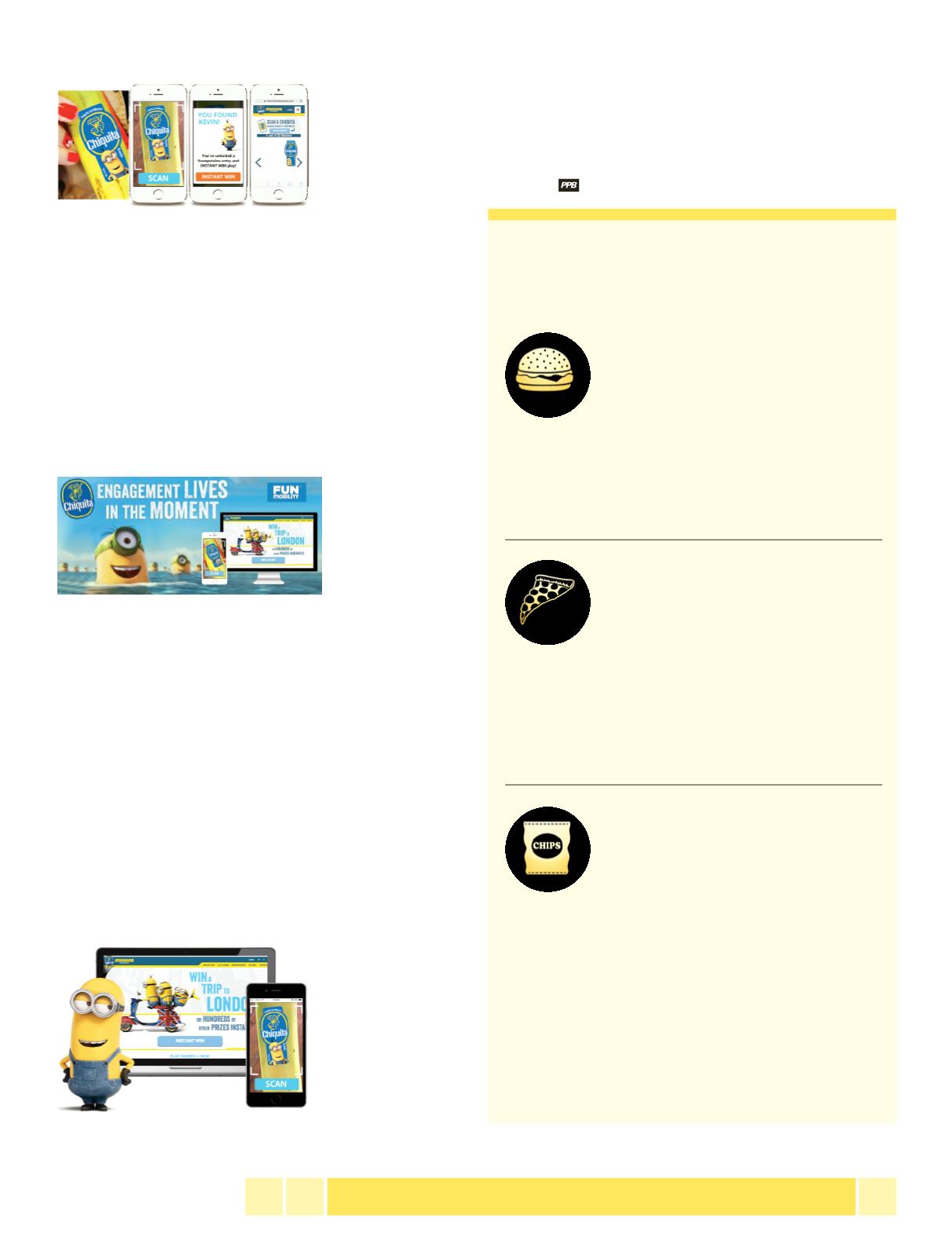

84 •
PPB
• SEPTEMBER 2015
THINK
Combining a
physical product with
a mobile-based
engagement cam-
paign brought
Chiquita a 50-percent
return rate, with one
in five mobile visitors
“opting in” to receive awards. More than half those opt-ins
have translated to new subscribers to Chiquita’s interactive
newsletter, which is also produced by FunMobility.
“We monitor every user session as well as the discovery
point across paid, owned, in-store and social media,” Lavine
explains. “We track individual user activity so we don’t give out
the same prize more than once to an individual user. We also
track aggregate audience data and flow everything into
Google Analytics.”
The target audience, mothers with young children, generated
75 percent of on-site traffic and activity. What’s more, the cam-
paign’s reach extended across several digital touch points,
including a down-
loadable Chiquita
fan app and a
movie-related web
experience.
On average,
the FunMobility
crew recorded
“very good” session times and repeat user rates, says Lavine.
“The two factors that drove this were 1) the instant-win
mechanism, and 2) users wanted to collect the 32 unique
Minions stickers that were on over 500 million Chiquita
bananas.”
Lavine says the concept is “exciting, because a globally-
recognized consumer packaged good is changing up the in-
store shopper experience by embedding digital content,
prizes, and rewards into a physical product, the Chiquita
Bananas. There has been an amazing response to the mobile
games, real-time engagement and overall experience.”
Combining physical and digital products for a campaign is
not without its pitfalls. Lavine says these can be avoided by
launching campaigns that resonate with target audiences and
encourage them to engage with the brand.
“The biggest pitfall is creating a campaign nobody cares
about. Because mobile execution can be very challenging for
certain companies
or vendors, mar-
keters sometimes
have a ‘touchdown’
mentality—meaning
the campaign was a
success because
everything worked,”
he explains.
“Building on this thought, have a mobile ‘call-to-action’ that
the consumer actually cares about. Nobody wants to ‘join the
mobile club.’ Consumers care about free stuff, the chance to
win sweepstakes, unique experiences and their friends. Ask
yourself ‘What’s in it for them?’ when you’re crafting your call
to action.”
The Brand:
McDonald’s
The Product:
The Big Mac is the star of a
lifestyle collection that’s launching this year—
raincoats, swim trunks, thermal underwear and wallpaper—
to be sold in the U.S., Canada, Australia and Europe.
Online Engagement Perk:
Profits from the collection,
which is sold through the Big Mac Shop online, are used to
support Ronald McDonald House Charities.
Check Out These Other Toothsome
BRAND ENGAGEMENT STRATEGIES
The Brand:
Pizza Hut
The Product:
The flavors that make Pizza
Hut popular were the inspiration for a line of
limited-edition nail polishes, to be given away on
Valentine’s Day to winners of a pizza poetry contest held in
Australia this year.
Online Engagement Perk:
Winners of the poetry con-
test, which was promoted via social media channels, saw
their work publicized on Pizza Hut’s Facebook page.
The Brand:
Frito-Lay
The Product:
Lay’s potato chips were given
a crowdsourced makeover via social media,
through the Do Us a Flavor campaign that first launched in
2012 and has become an annual event. Consumers submit
flavor ideas through Facebook, Twitter or text message, and
a handful are selected as finalists. The company produces
those flavors for a last-call vote from consumers.
Online Engagement Perk:
Consumers learn that Frito-
Lay values their opinions and appreciates their role in prod-
uct development; and, the contest winners receive a $1 mil-
lion prize or one percent of the winning flavor’s net sales.
Sources: Paste magazine,
Entrepreneur.com















